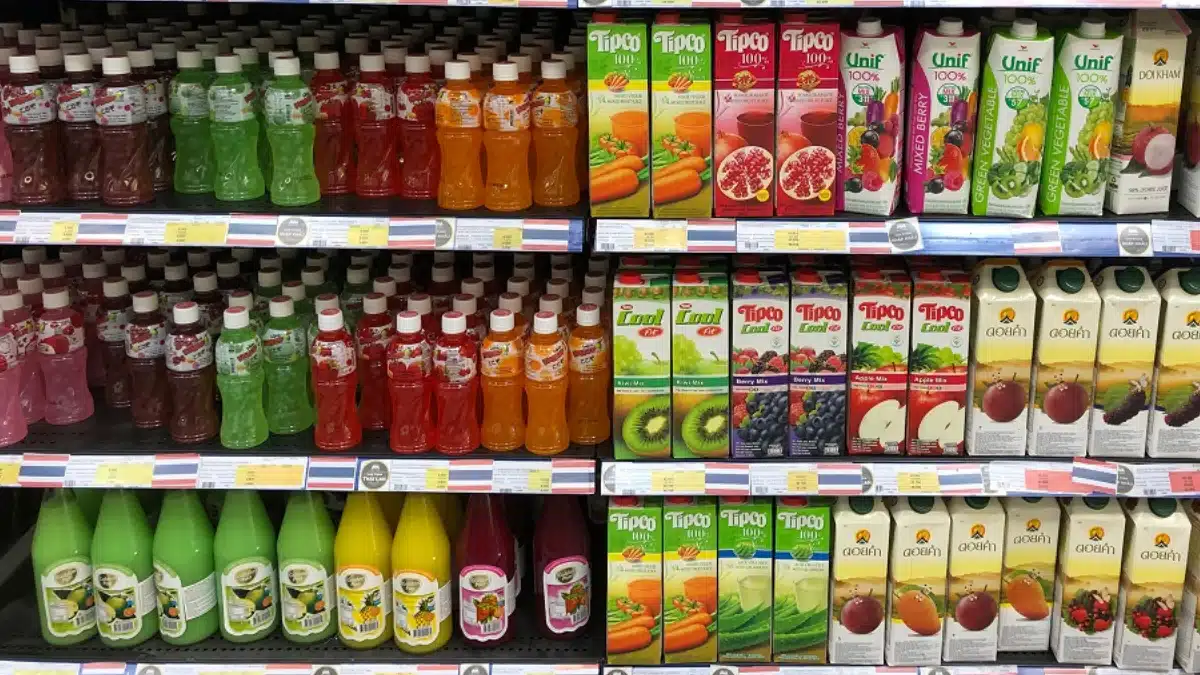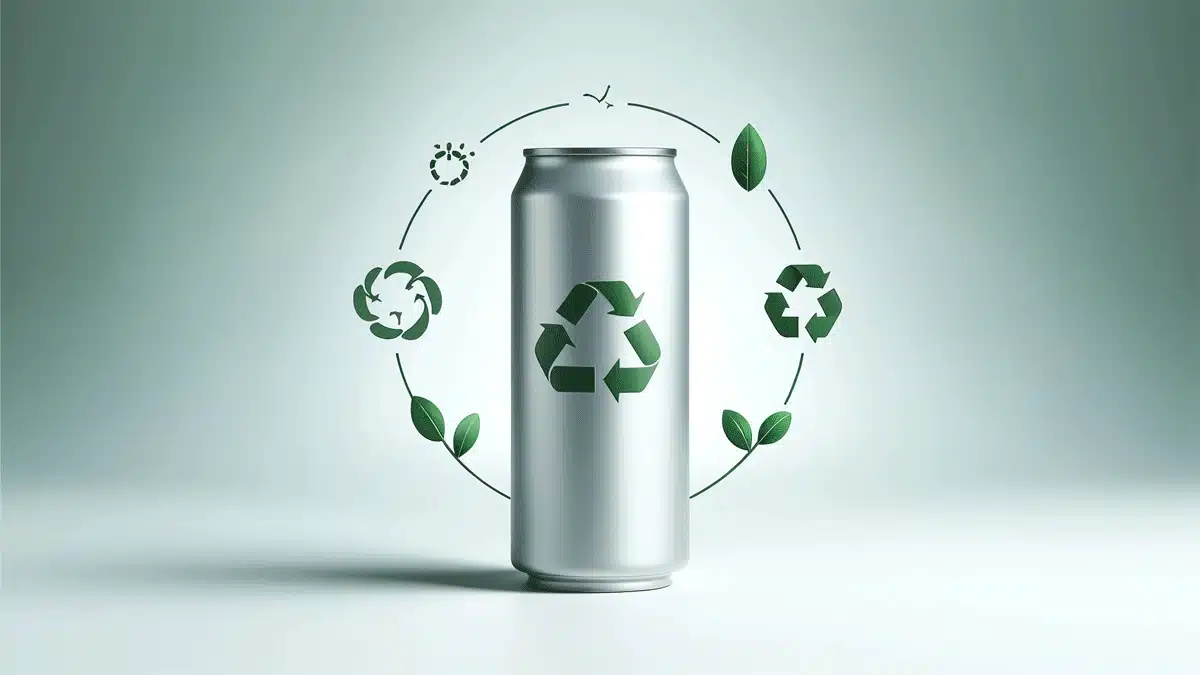Table of Contents
What is Ready to Drink (RTD)? The Global Convenience Solution

The Ready to Drink (RTD) segment represents pre-packaged beverages that are ready for immediate consumption without any further preparation. This core value of instant convenience perfectly captures the demand of today’s fast-paced global market. This convenience is what differentiates the Ready to Drink product from other beverage types.
Technically, RTD is a subset of the broader Ready to Serve (RTS) category. RTS includes all prepared food and drink that might require minimal action, like adding ice or heating, but RTD is defined by its ultimate convenience – open and consume. Understanding this nuance is vital for market positioning.
The RTD category is vast and evolving, ranging from familiar iced tea and bottled juice to modern innovations. High-value examples include sophisticated Cold Brew Coffee and canned alcoholic options like Hard Seltzers and premium RTD Cocktails (alcopops).
Why the Ready to Drink Market Is Booming?
The Ready to Drink market boom is driven by a profound shift in consumer behavior beyond simple thirst. Three primary forces fuel this sustainable growth.
Firstly, unmatched convenience aligns perfectly with the modern consumer’s busy schedule, making RTD products an essential daily choice.
Secondly, a relentless focus on health and wellness steers demand for low-sugar, zero-sugar, and Better-for-you products rich in vitamins or functional ingredients.
Finally, the rise of Functional Beverages meets specific needs, whether boosting immunity or providing cognitive support.
Global Ready To Drink Market Outlook (2025–2032)

The global Ready to Drink market presents immense growth potential. The market was valued at USD 106.00 billion in 2024. According to Databridge Market Research, the RTD market is projected to reach USD 168.94 billion by 2032, recording a CAGR of 6.0%.
North America and the Asia-Pacific (APAC) Market are the primary growth drivers. APAC giants like Japan and South Korea dominate the premium RTD tea and coffee sectors, while the U.S. remains the central innovation hub for alcoholic RTD Cocktails.
Ready to Drink Beverage Categories and Emerging Market Trends
Market diversification is the key factor sustaining the Ready to Drink sector’s robust growth. The industry is effectively segmented into core categories, each presenting distinct opportunities.
2.1. Trending Product Categories
Alcoholic RTD and Cocktails:
This segment is experiencing explosive growth, led by Hard Seltzers. The Ready to drink Cocktails category is forecast to grow at an impressive CAGR of 12.75% between 2025 and 2030, confirming the consumer desire for convenient, high-quality, at-home cocktail experiences.
Functional RTD Beverages:
The demand for health-supportive beverages creates huge momentum in the functional segment. Ready to drink Protein Shakes show a strong CAGR of 7.80%, driven by the active consumer pursuit of supplemental nutrients. Energy drinks continue to lead in revenue, but focus is shifting toward natural caffeine sources and enhanced formulas.
RTD Tea is widely expected to become the next major Functional Beverage crowd-pleaser. Its natural benefits align perfectly with the Better-for-you movement. Similarly, Cold Brew Coffee continues to expand rapidly due to its ability to retain delicate flavor profiles.
2.2. Packaging and Distribution Trends

Packaging Innovation:
The shift towards Sustainable Packaging is critical. While Bottles (PET/Glass) currently dominate, Aluminium Cans are projected for stronger growth, reaching a 6.13% CAGR. Cans align with sustainability goals and ensure longer Shelf-Life Stability Testing results. In the canned market, non-alcoholic drinks are growing faster than their alcoholic counterparts, signaling strong Flavor Innovation.
Distribution Channels:
The Off-trade Channel (physical retail) accounts for approximately 80.23% of revenue. However, E-commerce Growth and the DTC (Direct-to-Consumer) model offer vast expansion opportunities. DTC enables brands to gather invaluable First-Party Data and fully control their narrative.
2.3. Key Consumer Trends Driving Innovation
The following consumer demands are forcing RTD manufacturers to innovate and evolve their offerings:
| Major Trend | Core Insights & Innovation Opportunities | Key Data from Report |
| The Rise of Functional RTD | Demand shifts from eliminating bad ingredients to adding good ones (protein, probiotics, antioxidants). Focus on Plant-Based Solutions and Dairy-free/Vegan alternatives. | * RTD Protein Beverages: Strong CAGR of 7.80% (2025-2030). |
| The Sugar-Free Battle | Emphasis on reducing or eliminating sugar, utilizing natural or zero-calorie sweeteners, and maintaining a Clean Label. This addresses consumer concerns over artificial additives. | * Low-Sugar/Sugar-Free trend contributes +1.0% to overall CAGR. |
| Convenience & On-The-Go | Beverages must be fast, convenient, and healthy to fit busy lifestyles. Innovation in packaging to enhance portability and sustainability. | * Healthy On-The-Go: Ranks as the strongest driver, contributing +1.2% to the total CAGR. |
| Premium Alcoholic RTD | High demand for high-quality, pre-mixed RTD Cocktails for a premium at-home experience. Continuous pursuit of unique and sophisticated flavor profiles. | * RTD Cocktails: Fastest growth segment at 12.75% CAGR (2025-2030). |
Ready To Drink Beverages Market. Source: Mordor Intelligence
How Ready to Drink Beverages Are Made
Achieving a long shelf life while preserving the flavor and nutritional integrity of an RTD product requires specialized expertise. This focus on Quality Control (QC) and preservation technology is crucial.
Formulation Principles and Stability
Core formulation requires highly purified water, often achieved through RO/UV Water Treatment. The biggest technical hurdle is product stability. Precise pH balancing is crucial to prevent sedimentation and flavor degradation over time. The compatibility of natural sweeteners is a constant challenge for Sugar-Free/Low-Sugar formulas.
Modern Preservation Methods
Extending shelf life relies on two main technology groups. Thermal Processing includes high-temperature short-time (HTST Pasteurization), retorting, and UHT Sterilization. These methods effectively eliminate microorganisms but require strict temperature control to prevent negative impact on delicate flavors. Non-Thermal Methods are favored for premium products. Key technologies include Aseptic Filling and High-Pressure Processing (HPP), which preserve the fresh, nuanced flavor profile of complex Functional Beverages.
Deep Dive into the Production Process
The production sequence begins with blending ingredients. Next, Homogenization ensures a stable texture by blending components, and De-aeration removes dissolved oxygen, preventing oxidation that causes off-flavors. The beverage then enters the preservation stage. Finally, the product is packaged, with modern Aseptic Filling lines being the optimal choice for high-end Ready to Drink products.
Commercial Strategy and Future Opportunities
Successfully launching an RTD product demands a smart strategy balancing distribution channels and the supply chain model.
Tapping into Future Trends (2026+)
The RTD landscape is shifting toward specialized categories and technology integration. Brands must focus on highly specialized Niche Segments:
- Plant-Based Milks: RTD made from oat, almond, or soy continues exponential growth, meeting demand for vegan alternatives.
- Specialized Supplements: RTD featuring Adaptogens (for stress reduction) or Nootropics (for cognitive enhancement) are trending strongly among young professionals seeking functional benefits.
- The Clean Label Push: Consumers are actively seeking the Clean Label guarantee. This requires brands to adopt Supply Chain Transparency supported by technologies like Blockchain Technology to verify ingredient sourcing.
Technology and Customization
Technology adoption is a non-negotiable strategic trend. AI is leveraged to analyze consumer data, helping to discover and predict new flavor combinations. This technology also optimizes formulas for cost reduction. The move towards Mass Customization is supported by IoT and smart factory automation, allowing production lines to efficiently switch between small batches of specialized Ready to Drink products.
Supply Chain Models for RTD Success
Co-packing (Contract Manufacturing): This model is cost-efficient and production-ready, often used by new RTD brands.
In-house Production: This offers complete control over quality and proprietary recipes, justifying its high initial capital investment.
The strategic choice between these models, combined with leveraging E-commerce Growth, allows brands to capture market share faster and scale effectively in the competitive Ready to Drink market.
Conclusion
The Ready to Drink beverage industry represents the perfect intersection of convenience, wellness, and innovation. With premium segments like RTD cocktails and functional drinks leading the way, the market continues to reward brands that innovate boldly and move fast.
Future success will depend on three key pillars:
- Adopting sustainable packaging,
- Leveraging non-thermal preservation, and
- Building consumer trust through clean-label transparency.
In a world that values speed and health equally, the Ready to Drink revolution has only just begun.
FAQs
- What is Ready to Drink
“Ready to Drink” (RTD) refers to pre-packaged beverages that can be consumed instantly — no mixing, brewing, or dilution needed. Examples include bottled iced tea, cold brew coffee, protein shakes, and canned cocktails.
- What types of Ready to Drink beverages are popular today?
Top-performing categories include:
- RTD Coffee & Tea – cold brew and herbal infusions.
- Functional RTD Drinks: – protein shakes, energy boosters, vitamin drinks.
- Alcoholic RTD Cocktails – hard seltzers and pre-mixed cocktails.
- How is Ready to Drink different from Ready to Serve (RTS)?
RTD drinks are designed for immediate consumption, while RTS beverages may require minimal preparation, such as adding ice or water. RTD is a subset of RTS that prioritizes maximum convenience.
REFERENCES
Data Bridge Market Research. (n.d.). Global Ready to Drink (RTD) Beverages Market. Retrieved from https://www.databridgemarketresearch.com/reports/global-rtd-beverages-market
Future Market Insights. (2025, July). Adaptogenic Beverages Market Analysis Report – 2035. Retrieved from https://www.futuremarketinsights.com/reports/adaptogenic-beverages-market
Grand View Research. (n.d.). Ready To Drink Shakes Market Size & Share Report, 2030. Retrieved from https://www.grandviewresearch.com/industry-analysis/ready-to-drink-rtd-shakes-market
Mordor Intelligence. (n.d.). Ready to Drink Beverages Market Size & Share Analysis – Growth Trends & Forecasts (2024 – 2029). Retrieved from https://www.mordorintelligence.com/vi/industry-reports/ready-to-drinks-beverages-market
Mordor Intelligence. (2025, October). Ready-To-Drink Protein Beverages Market – Manufacturers & Size. Retrieved from https://www.mordorintelligence.com/industry-reports/ready-to-drink-protein-beverages-market
